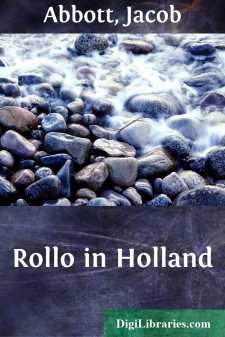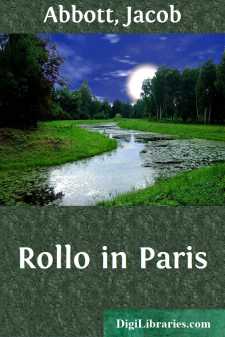Categories
- Antiques & Collectibles 13
- Architecture 36
- Art 48
- Bibles 22
- Biography & Autobiography 813
- Body, Mind & Spirit 142
- Business & Economics 28
- Children's Books 17
- Children's Fiction 14
- Computers 4
- Cooking 94
- Crafts & Hobbies 4
- Drama 346
- Education 46
- Family & Relationships 57
- Fiction 11829
- Games 19
- Gardening 17
- Health & Fitness 34
- History 1377
- House & Home 1
- Humor 147
- Juvenile Fiction 1873
- Juvenile Nonfiction 202
- Language Arts & Disciplines 88
- Law 16
- Literary Collections 686
- Literary Criticism 179
- Mathematics 13
- Medical 41
- Music 40
- Nature 179
- Non-Classifiable 1768
- Performing Arts 7
- Periodicals 1453
- Philosophy 64
- Photography 2
- Poetry 896
- Political Science 203
- Psychology 42
- Reference 154
- Religion 513
- Science 126
- Self-Help 84
- Social Science 81
- Sports & Recreation 34
- Study Aids 3
- Technology & Engineering 59
- Transportation 23
- Travel 463
- True Crime 29
Rollo in Holland
by: Jacob Abbott
Categories:
Description:
Excerpt
Chapter I.
Preparations.
Holland is one of the most remarkable countries on the globe. The peculiarities which make it remarkable arise from the fact that it is almost perfectly level throughout, and it lies so low. A very large portion of it, in fact, lies below the level of the sea, the waters being kept out, as every body knows, by immense dikes that have stood for ages.
These dikes are so immense, and they are so concealed by the houses, and trees, and mills, and even villages that cover and disguise them, that when the traveller first sees them he can hardly believe that they are dikes. Some of them are several hundred feet wide, and have a good broad public road upon the top, with a canal perhaps by the side of it, and avenues of trees, and road-side inns, and immense wind mills on the other hand. When riding or walking along upon such a dike on one side, down a long slope, they have a glimpse of water between the trees. On the other, at an equal distance you see a green expanse of country, with gardens, orchards, fields of corn and grain, and scattered farm houses extending far and wide. At first you do not perceive that this beautiful country that you see spreading in every direction on one side of the road is below the level of the water that you see on the other side; but on a careful comparison you find that it is so. When the tide is high the difference is very great, and were it not for the dikes the people would be inundated.
Indeed, the dikes alone would not prevent the country from being inundated; for it is not possible to make them perfectly tight, and even if it were so, the soil beneath them is more or less pervious to water, and thus the water of the sea and of the rivers would slowly press its way through the lower strata, and oozing up into the land beyond, would soon make it all a swamp.
Then, besides the interpercolation from the soil, there is the rain. In upland countries, the surplus water that falls in rain flows off in brooks and rivers to the sea; but in land that is below the level of the sea, there can be no natural flow of either brooks or rivers. The rain water, therefore, that falls on this low land would remain there stagnant, except the comparatively small portion of it that would be evaporated by the sun and wind.
Thus you see, that if the people of Holland were to rely on the dikes alone to keep the land dry, the country would become in a very short time one immense morass.
To prevent this result it is necessary to adopt some plan to raise the water, as fast as it accumulates in the low grounds, and convey it away. This is done by pumps and other such hydraulic engines, and these are worked in general by wind mills.
They might be worked by steam engines; but steam engines are much more expensive than wind mills. It not only costs much more to make them, but the expense of working them from day to day is very great, on account of the fuel which they require. The necessary attendance on a steam engine, too, is very expensive....












